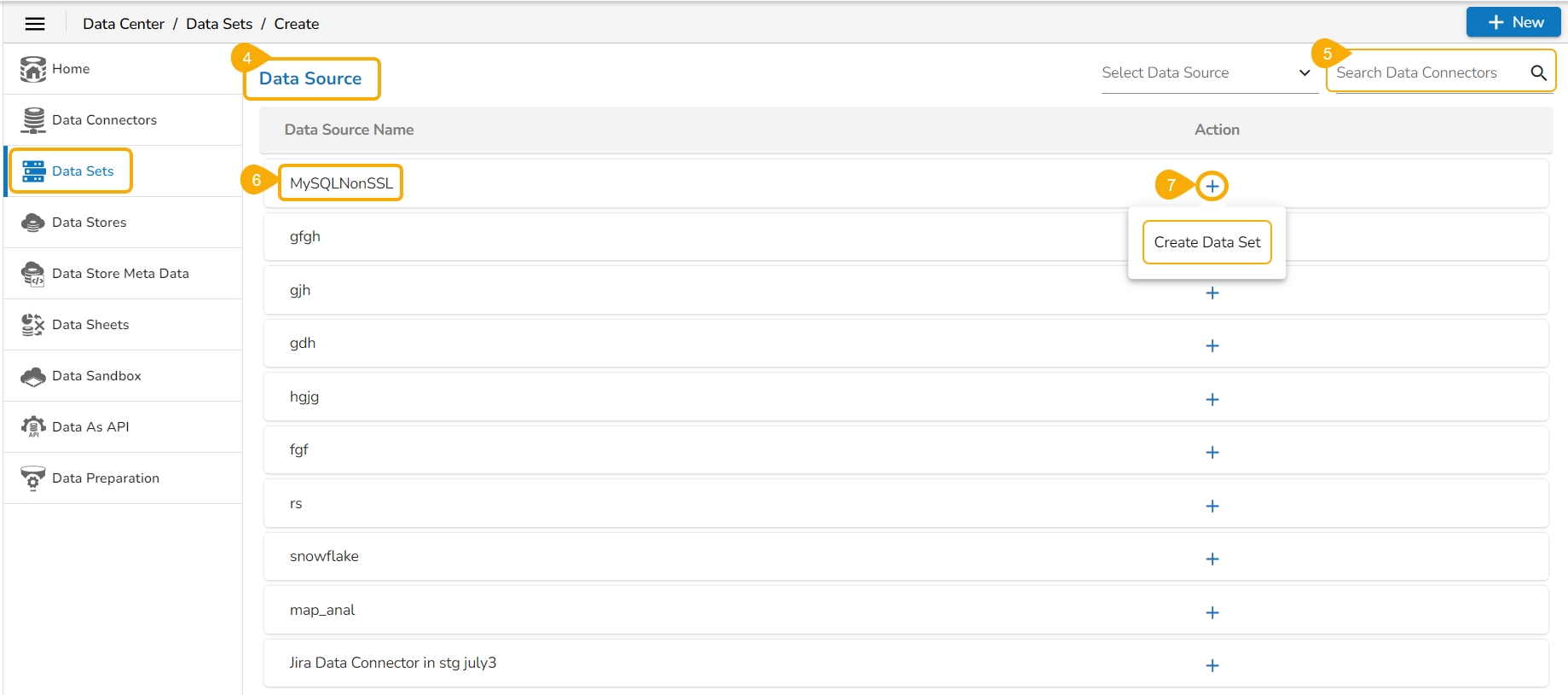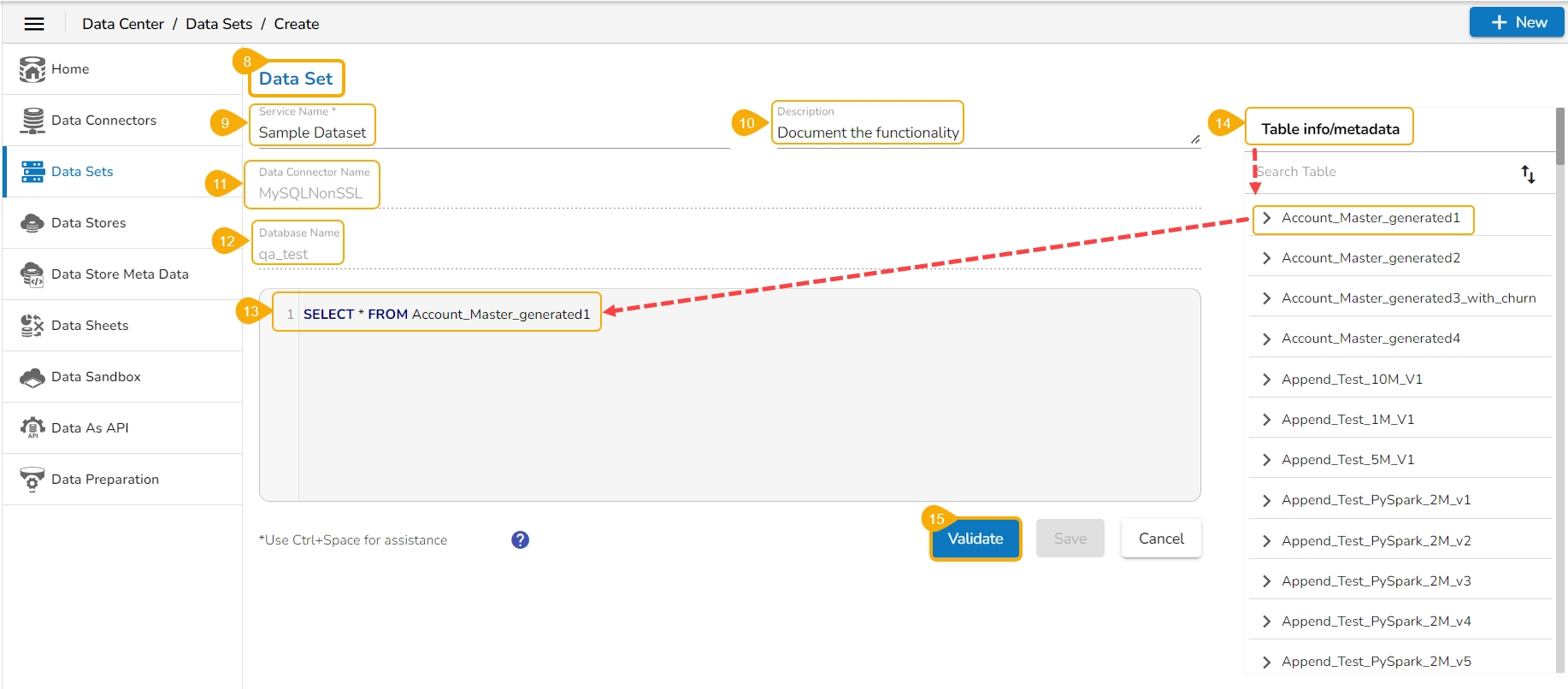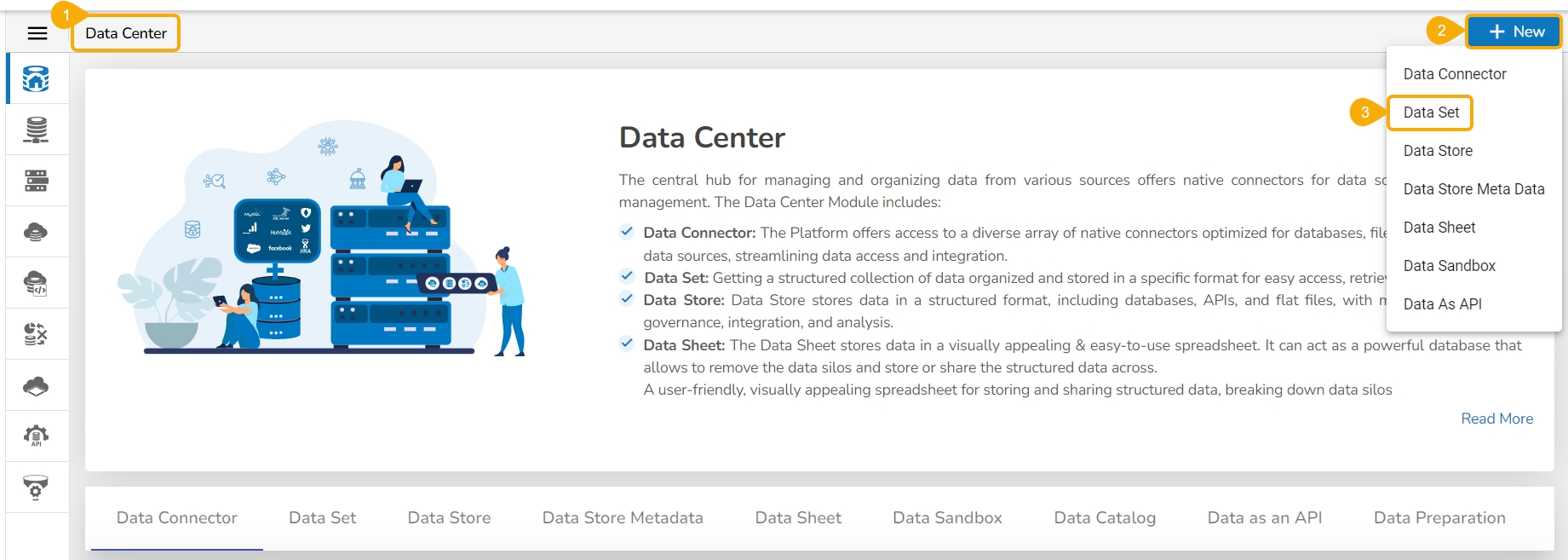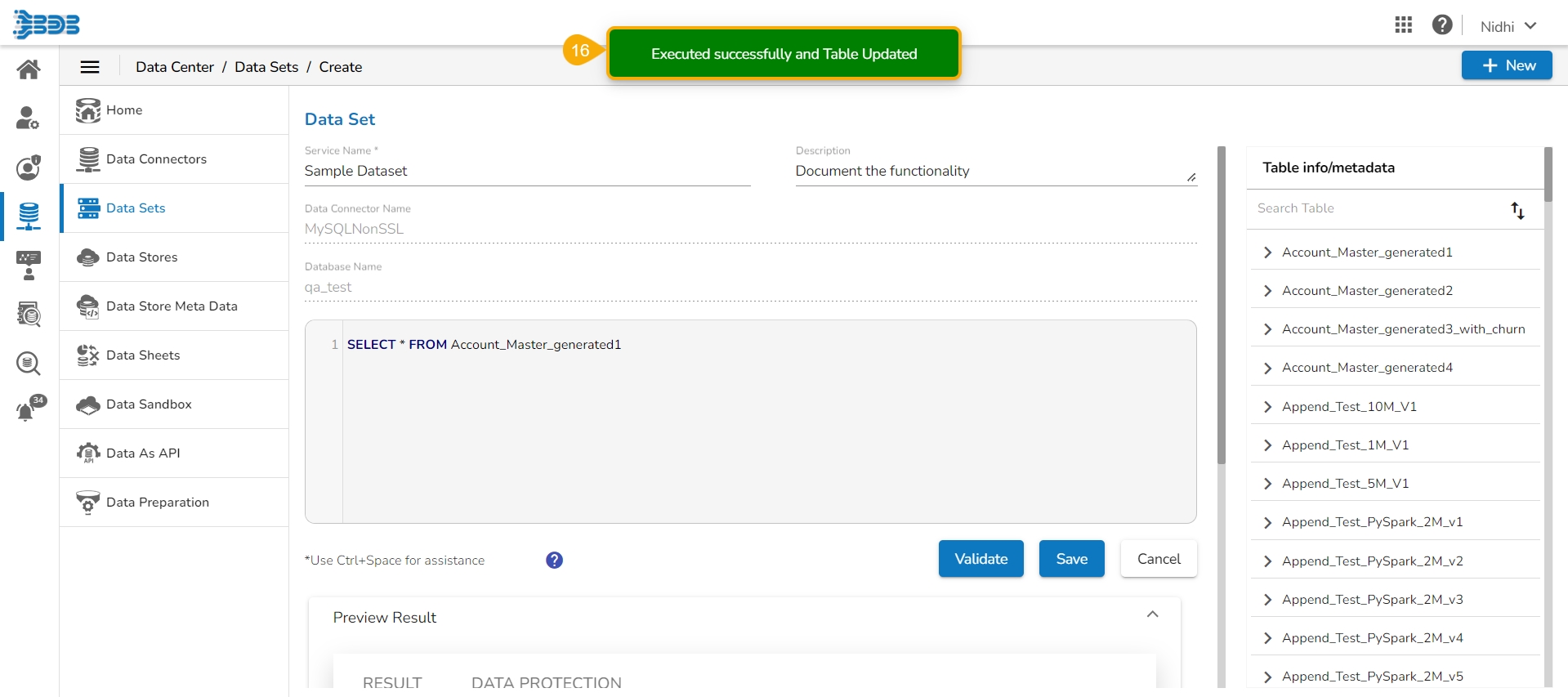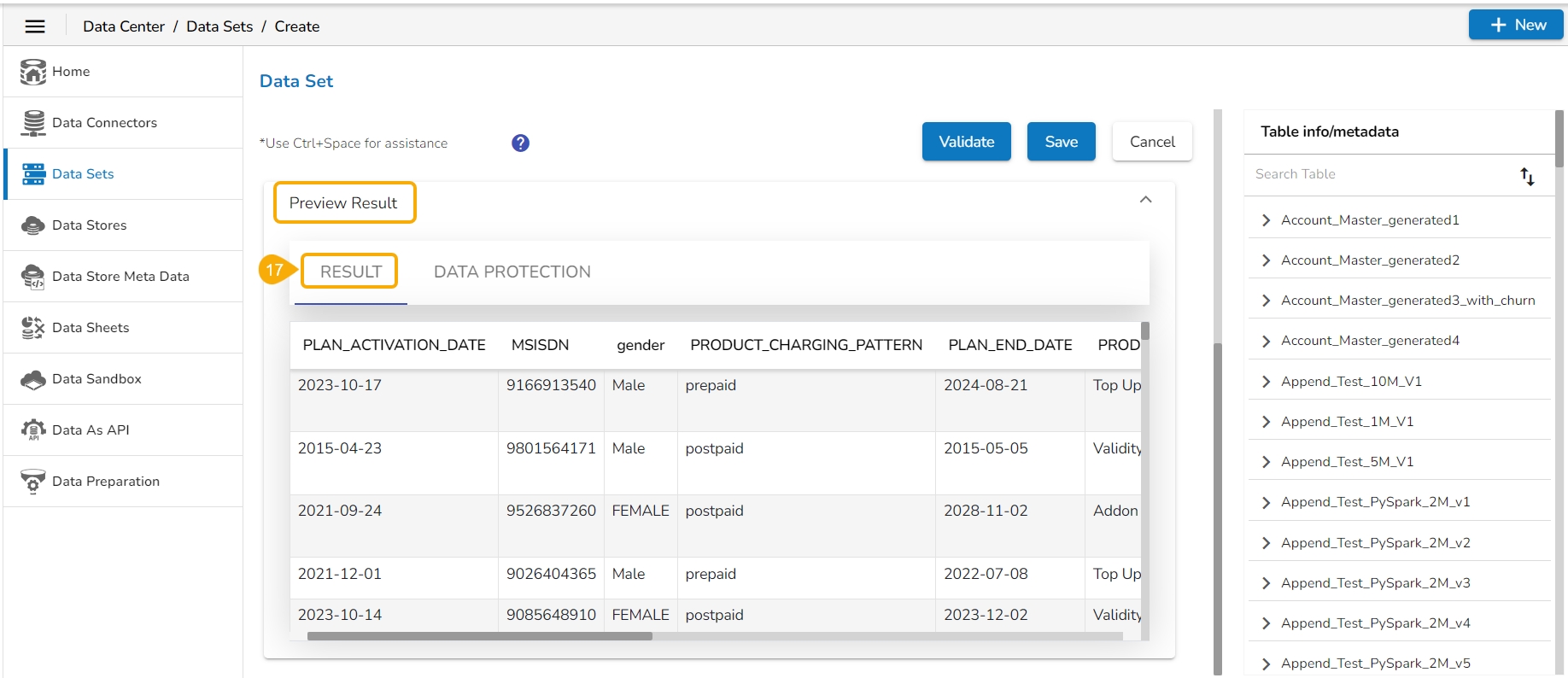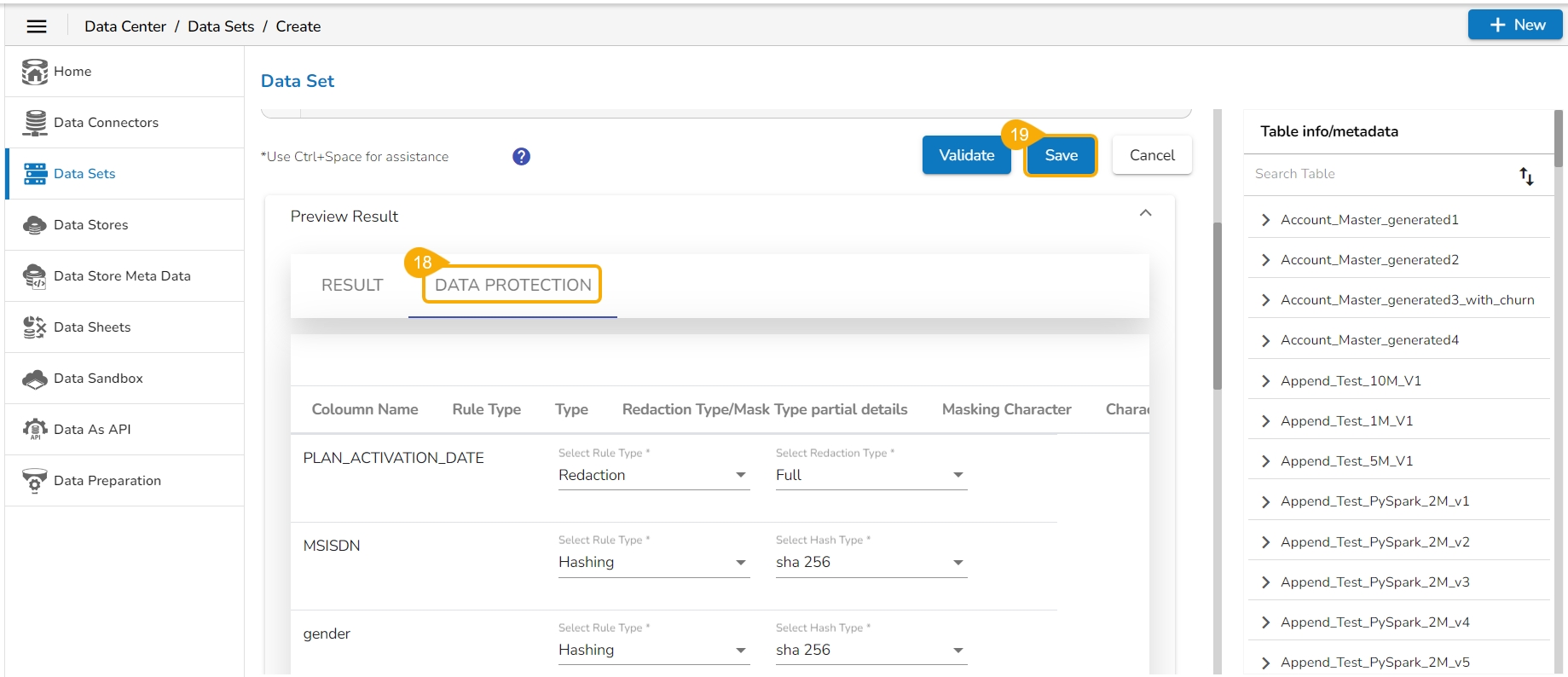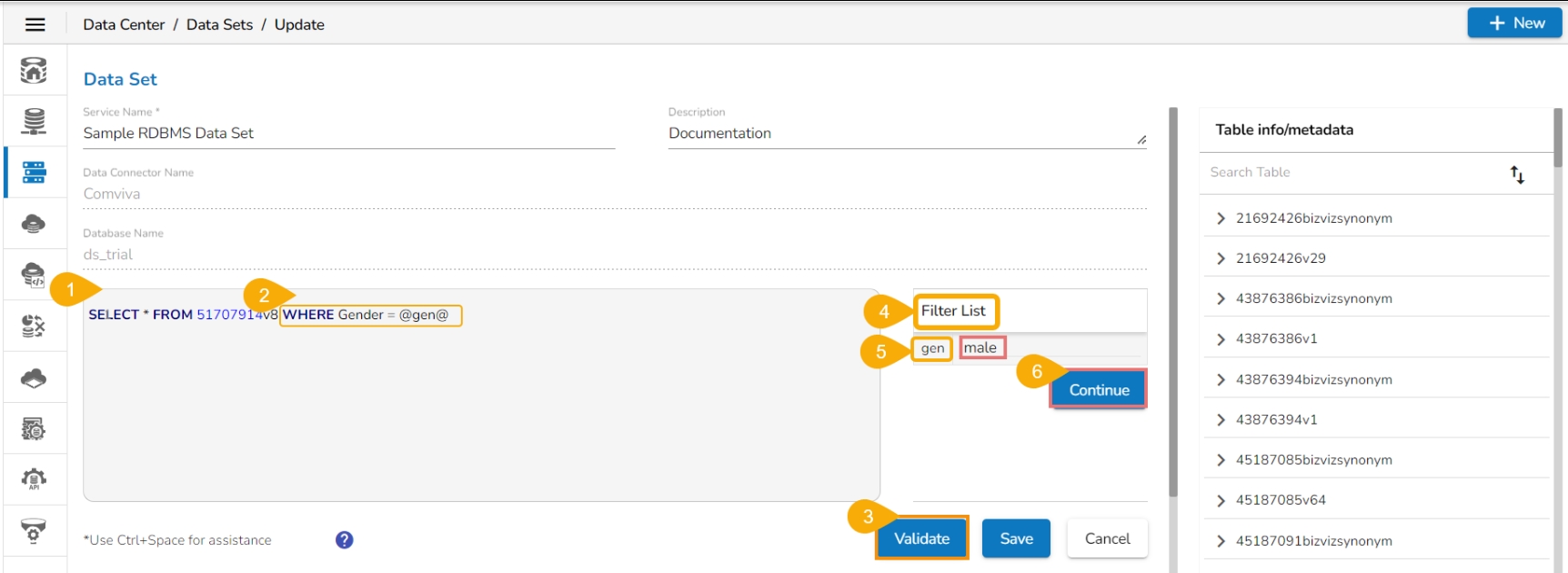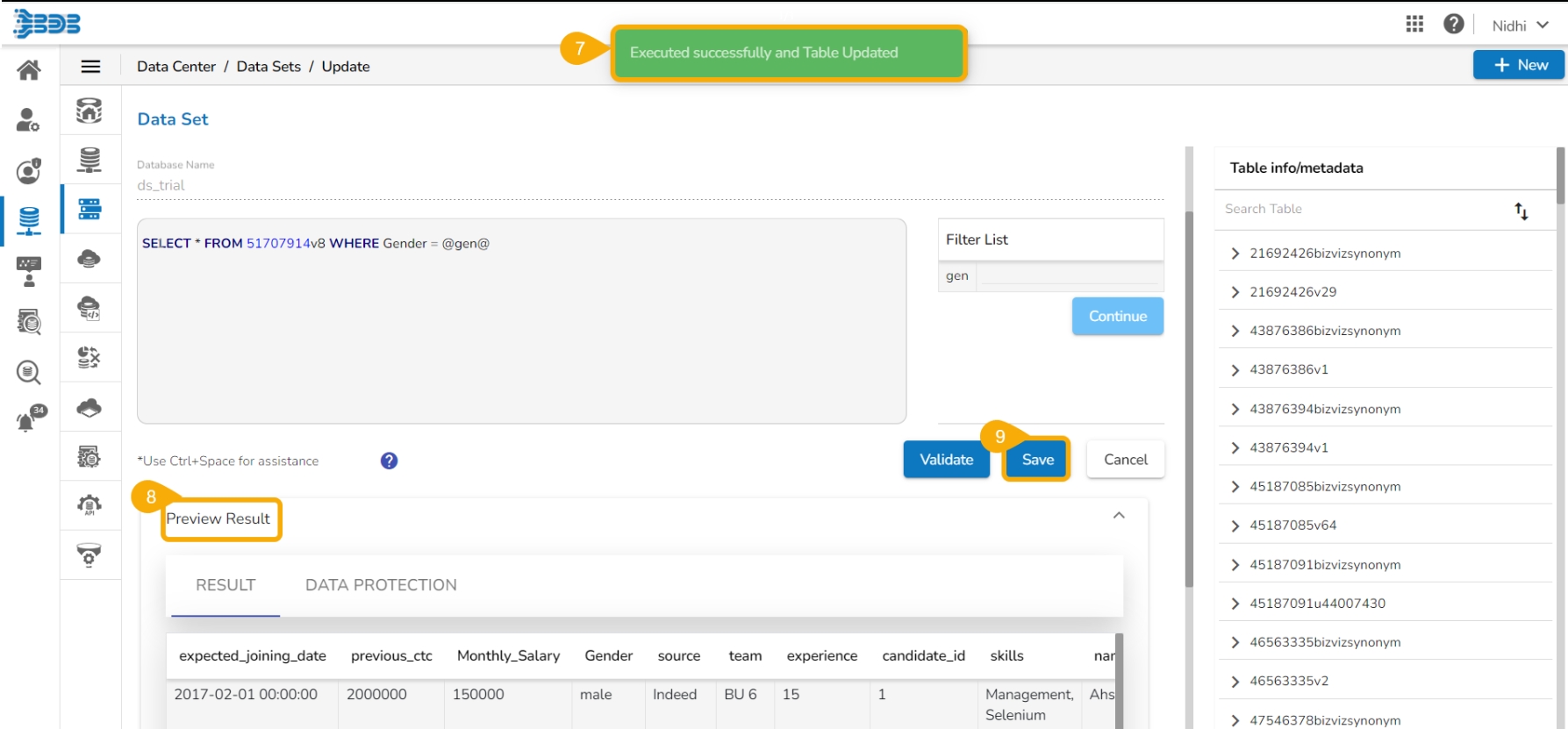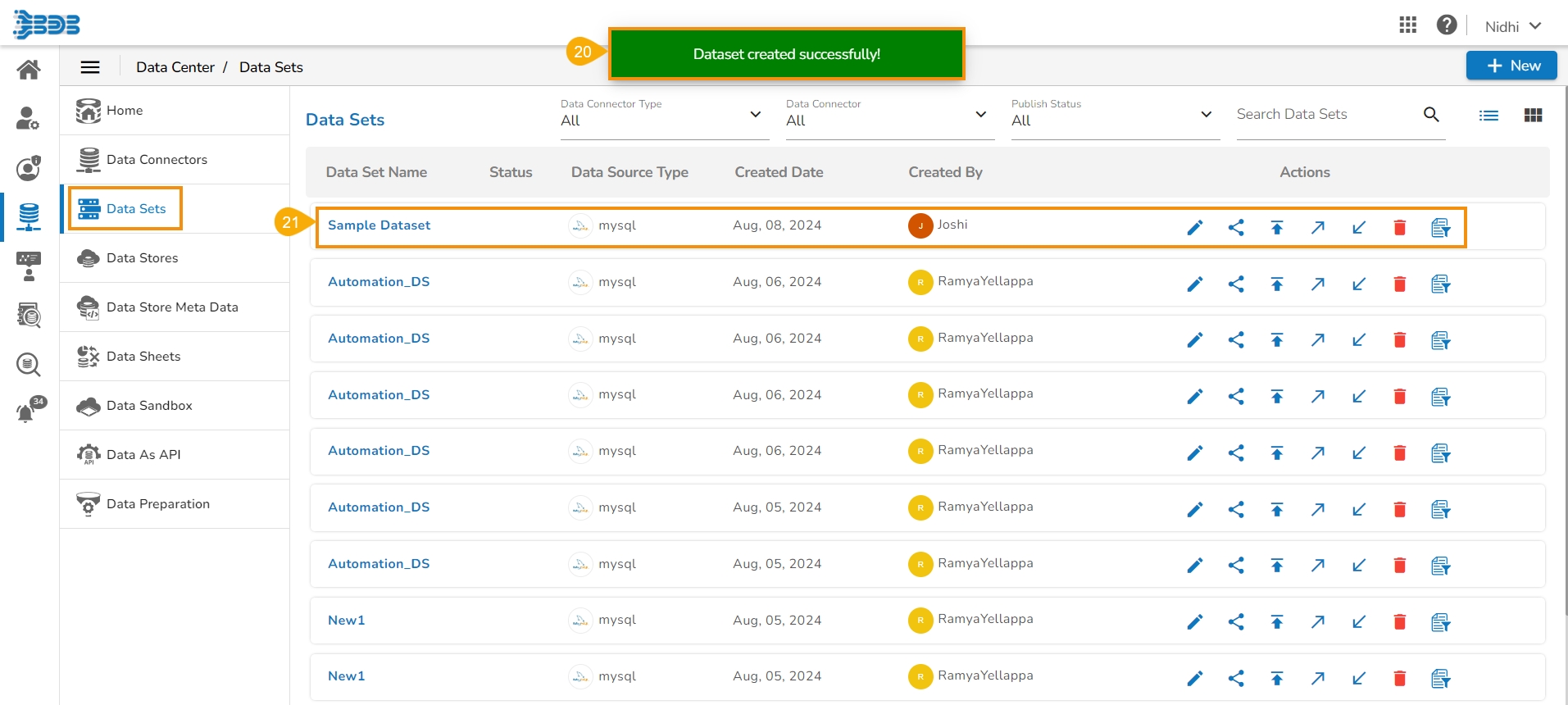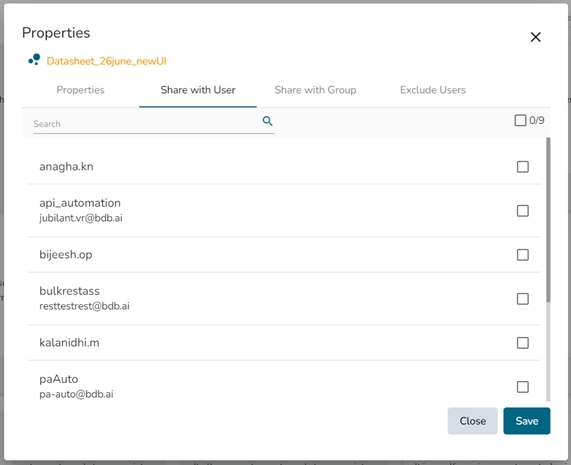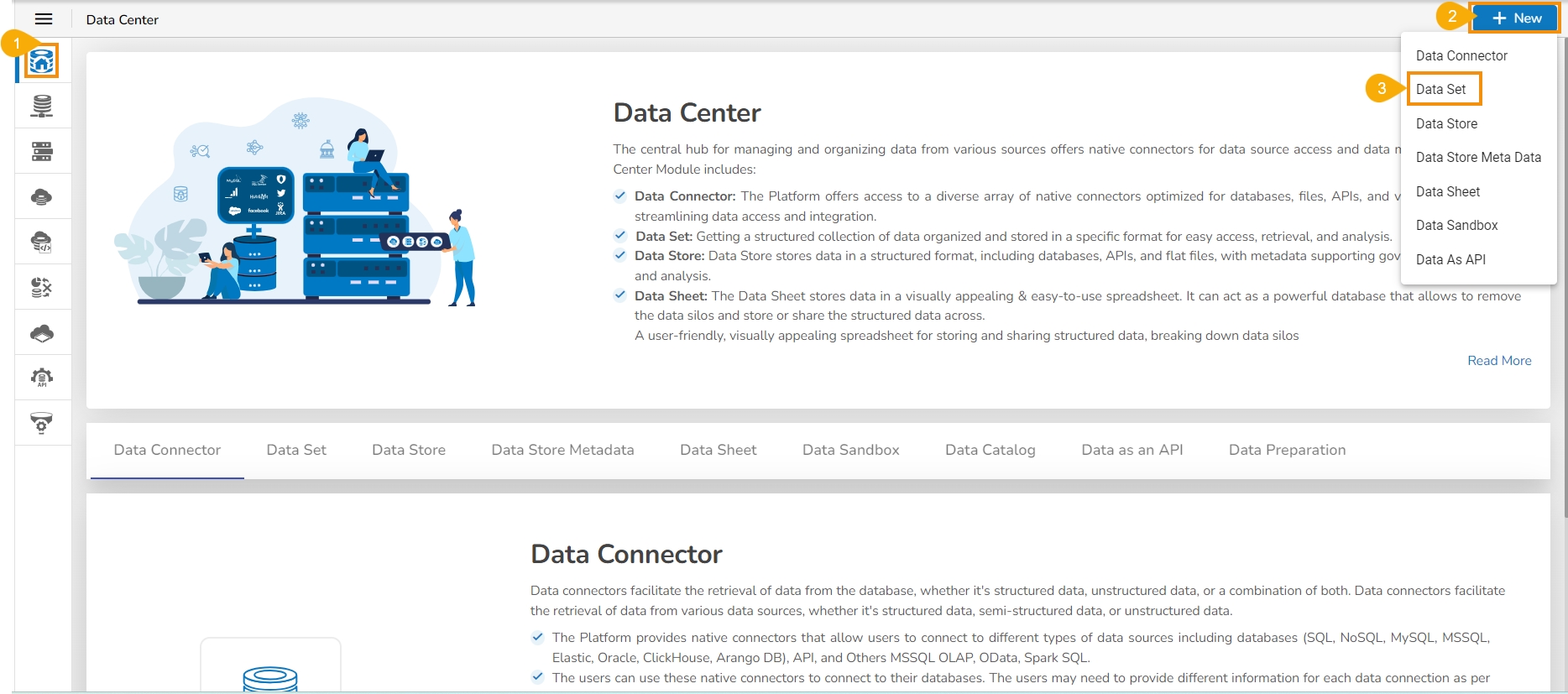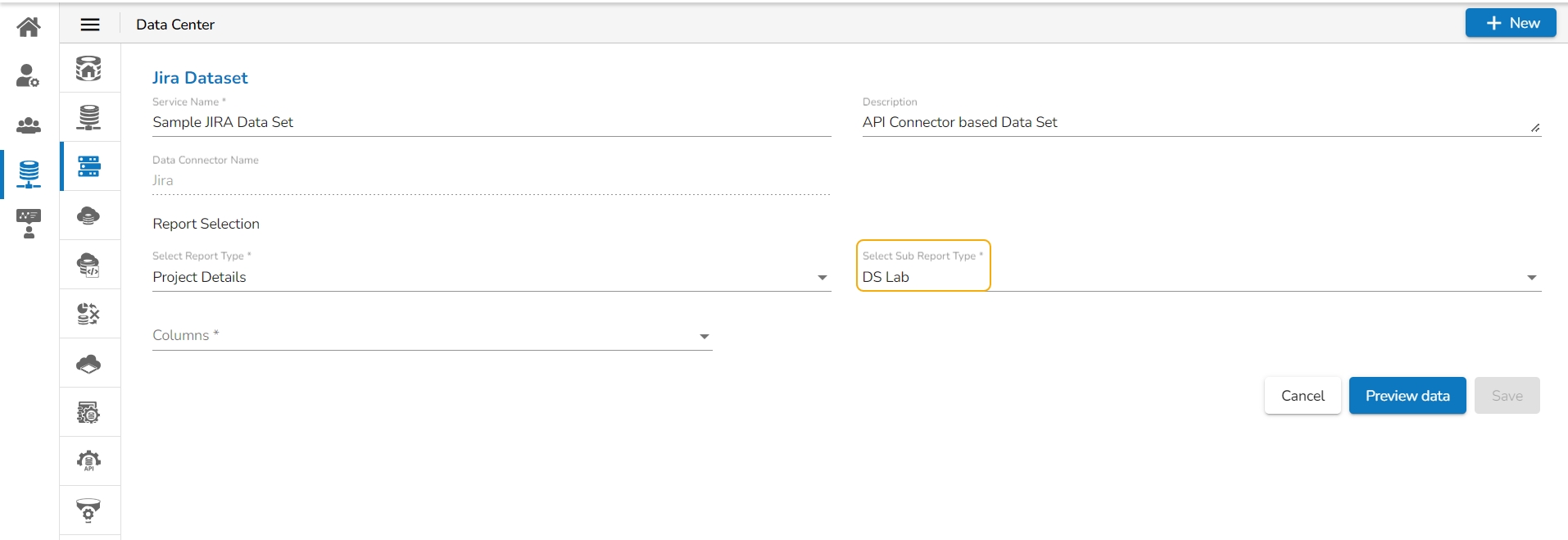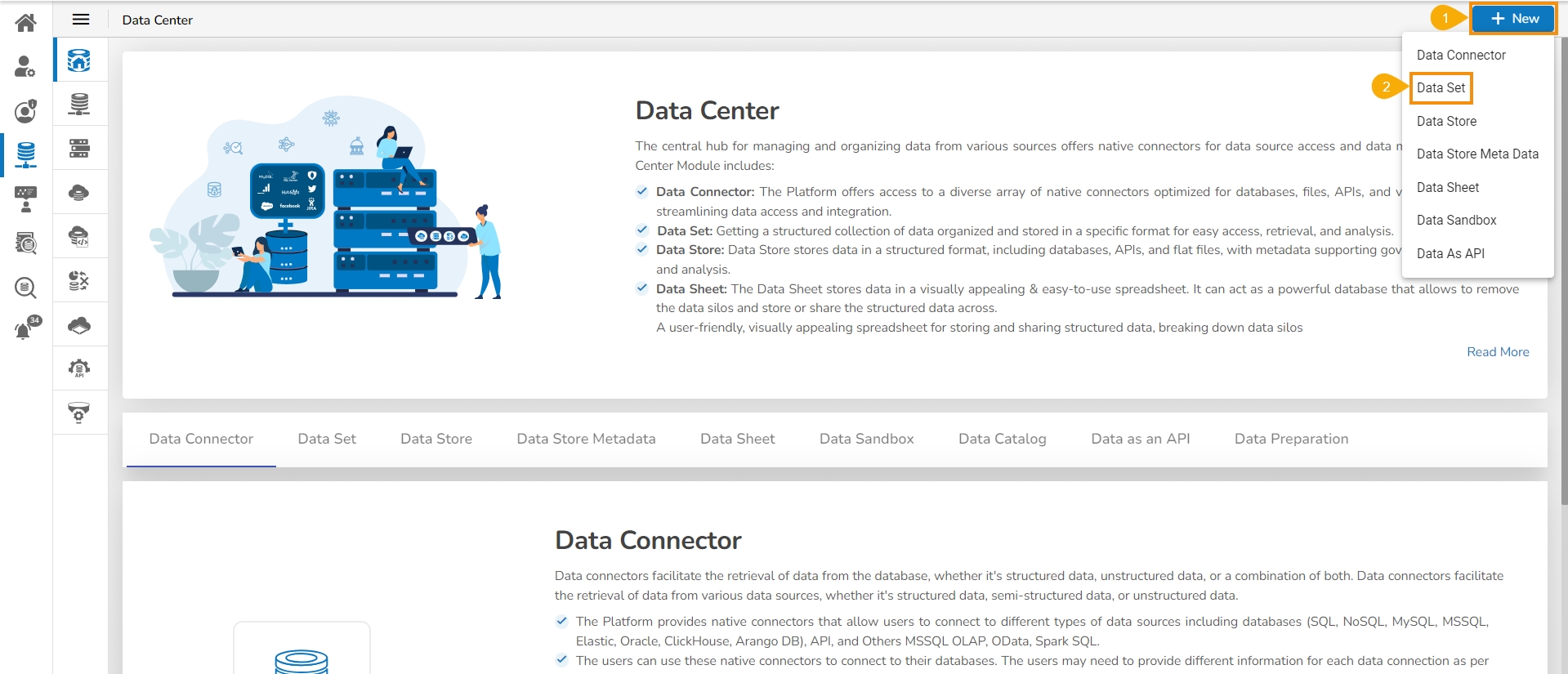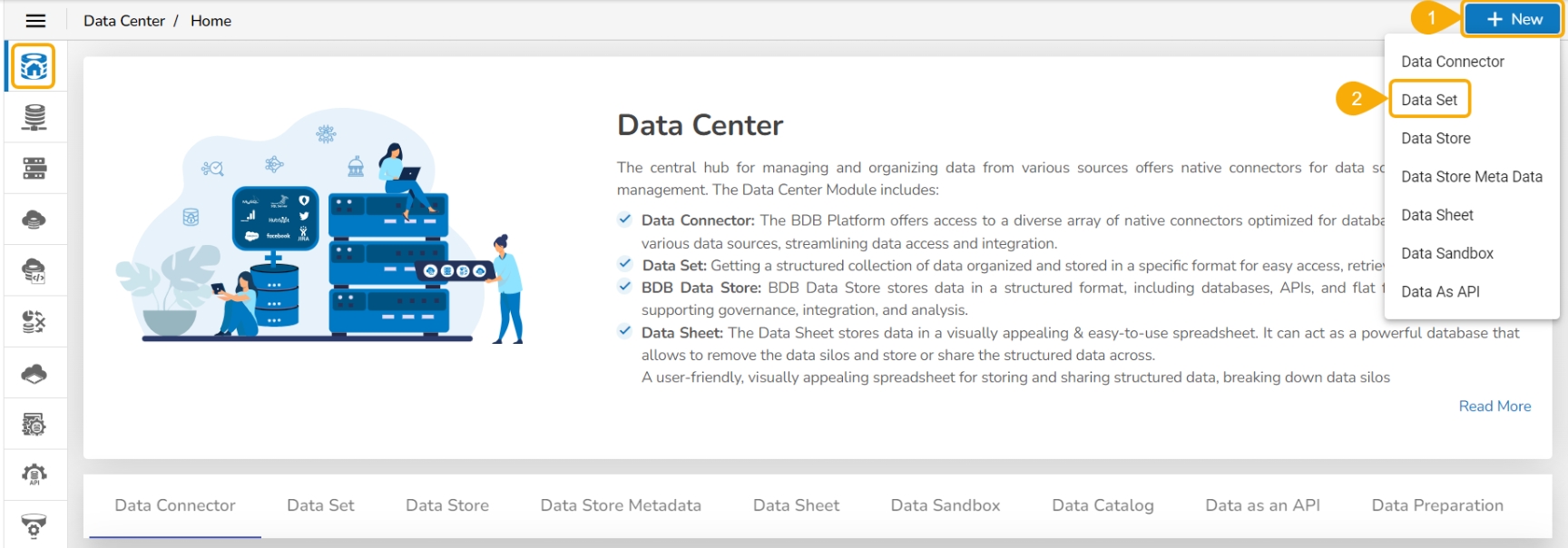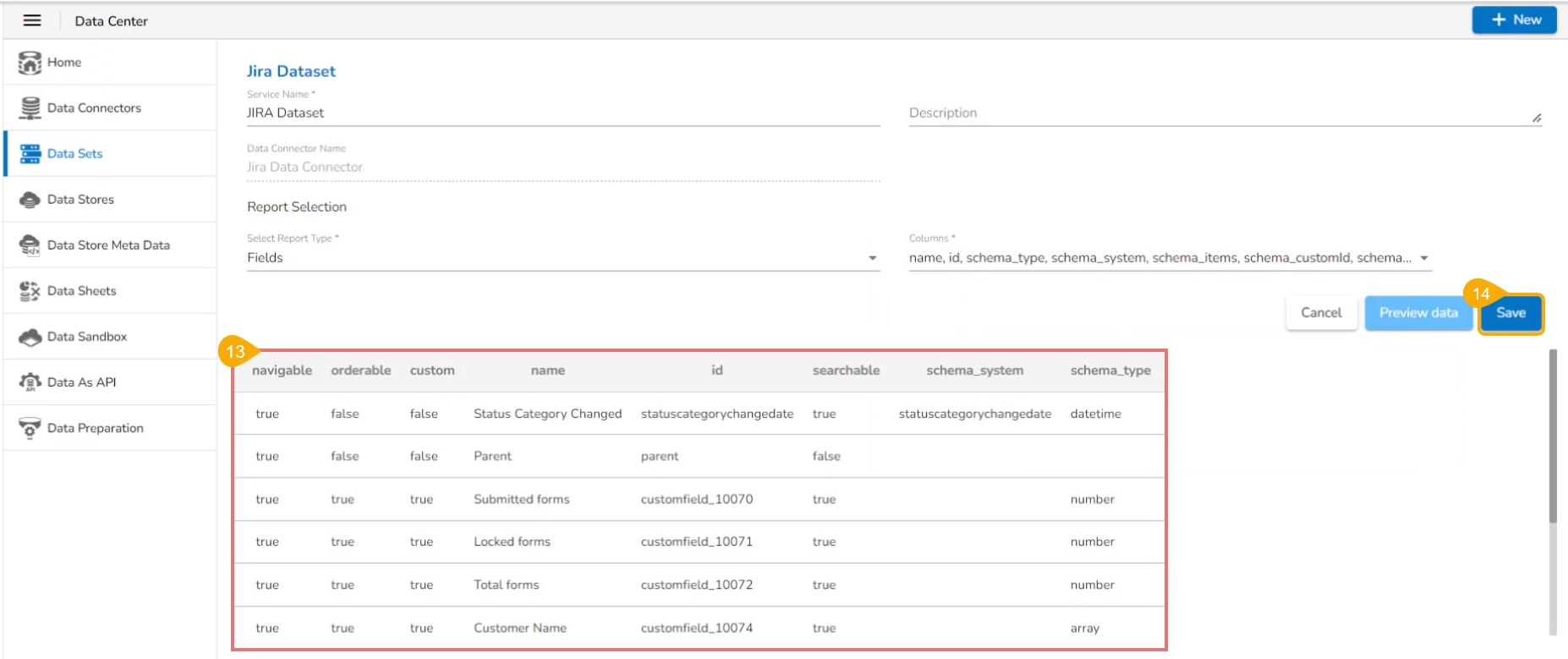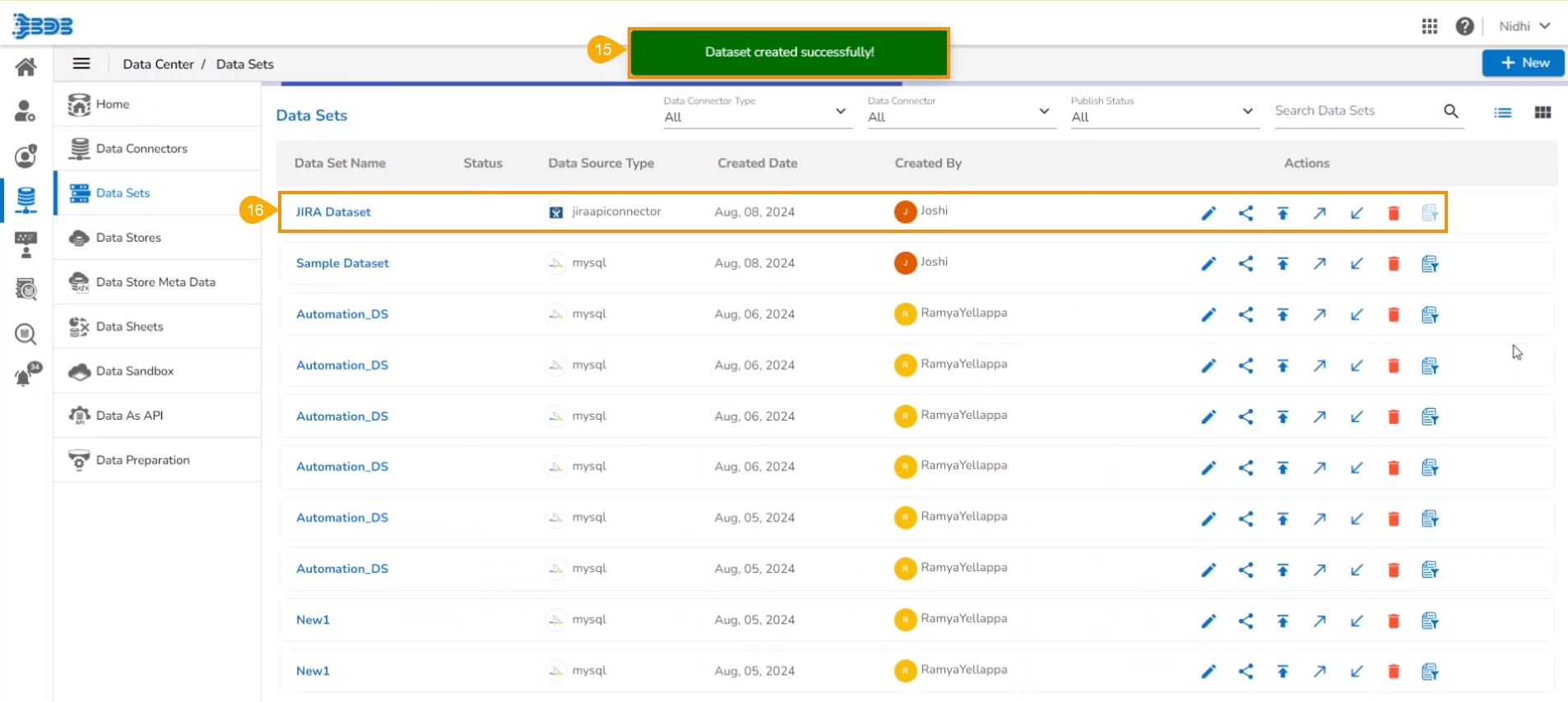
Loading...
Loading...
Loading...
Loading...
Loading...
Loading...
Loading...
Check out the illustration on creating a Pinot Data Set based on a Pinot Data Connector.
Navigate to the Data Center homepage.
Click the New option.
Select the Data Set option from the context menu.
A list of available Data Connectors appears entitled as Data Source Name.
Select a Data Connector with the Pinot database.
Click the Create Data Set icon.
The Data Set page opens.
Configure the following fields:
Service Name: Enter any user-defined name for the new data set.
Description: Provide a brief description of the Data Set (optional).
Data Connector Name: This is a pre-defined field based on the selected data connector.
Database Name: This is a pre-defined field based on the data connector chosen earlier.
Query: Write a valid query service in the given space.
Table Information: On the right side of the page Table information is displayed. It will contain all the tables in the Database and the Column name in the table. Double click on the Table or Column will auto-generate a sample query for the user to validate and get data.
Click the Validate option to execute the new Data Set.
Please Note: Users must perform the following steps if the data set query contains a filter.
If the query contains filters, then the right-side filter column will appear.
Click on the Continue button to execute the query.
A message appears to inform the successful execution.
The data preview appears at the bottom of the page.
The Save option gets enabled.
A notification message appears to ensure the completion of the action.
The newly created Data Set gets added to the Data Sets List.
Navigate to the Data Center homepage.
Click the New option.
Select the Data Set option from the context menu.
The Data Connectors list is displayed with the Create Data Set Action icon (+) for all the available data connectors.
Select a Data Connector and click the Create Data Set icon (E.g., the Pinot Data Connector is selected in the given image).
Please Note: You may also follow the below-given steps.
You can select the Arango DB Connector from the Data Source filter.
Search and select a data connector from the displayed list of Data Connectors.
Click the Action/ Create Data Set (+) icon provided in the same row of the selected data connector.
The Data Set page opens with the following Configuration fields:
Service Name: Enter any user-defined name for the new data set.
Description: Provide a brief description of the Data Set (optional).
Data Connector Name: This is a pre-defined field based on the selected data connector.
Database Name: This is a pre-defined field based on the data connector chosen earlier.
Query: Write a valid query service in the given space.
Table Information: On the right side of the page Table information is displayed and that will contain all the tables in the Database and the Column name in the table. Double click in the Table or Column will auto-generate a sample query so that the user can validate and get data.
Click the Validate option to execute the new Data Set.
If the query contains filters, then the right-side filter column will appear.
Click on the Continue button then the query will execute.
A message appears to inform the successful execution.
The data preview appears at the bottom of the page.
The Save option gets enabled.
A notification message appears to ensure the completion of the action.
The newly created Data Set gets added to the Data Sets List.
Navigate to the Data Center homepage.
Click the New option.
Select the Data Set option from the context menu.
The Data Connectors list gets displayed with the Create Data Set Action icon (+) for all the available data connectors.
Select a Data Connector and click on the Create Data Set icon (E.g., the Elastic Connector is selected in the given image).
The Data Set page opens with the following Configuration fields:
Service Name: Enter any user-defined name for the new data set.
Description: Provide a brief description of the Data Set (optional).
Data Connector Name: This is a pre-defined field based on the selected data connector.
Index Id: This is a pre-defined field based on the data connector chosen earlier.
Query: Write a valid query service in the given space.
Click the Validate option to execute the new Data Set.
A message appears to inform the successful execution.
The data preview appears at the bottom of the page.
The Save option gets enabled. Click the Save option.
A notification message appears to ensure the completion of the action.
The newly created Data Set gets added to the Data Sets List.
Click the New menu from the Data Center page.
Select the Data Set from the context menu.
The Data Connectors list appears.
Select an FTP Server using the data source filter.
Search an FTP Data Connector from the Search Data Connectors list.
Select a Data Connector from the list.
Click the Create Data Set option for the selected Data Connector.
A new Data Set creation form opens for the FTP Data Set.
Provide a name for the Data Set.
Describe the Data Set (Optional).
The pre-selected Data Connector name appears.
Click the Get All Data option.
Select a file from the displayed list (Use double-click on a file to select it.)
After selecting a specific file, click the Get Sheets option.
Choose a Data Sheet using the Select Report Type drop-down menu.
Click the Save option after getting the data preview.
A success message appears to assure the creation of a new dataset.
The newly created FTP Data Set gets added to the Data Sets list.





Check out the given walk-through on how to create a Data Set using the RDBMS Data Connector.
Navigate to the Data Center homepage.
Click the New option.
Select the Data Set option from the context menu.
The Data Source page opens.
The Data Connectors list is displayed.
Search for a Data Connector using the Search Data Connectors bar.
with the Create Data Set Action icon (+) for all the available data connectors.
The Data Set page opens.
Service Name: Enter any user-defined name for the new data set.
Description: Provide a brief description of the Data Set (optional).
Data Connector Name: This is a pre-defined field based on the selected data connector.
Database Name: This is a pre-defined field based on the data connector chosen earlier.
Query: Write a valid query service in the given space (Use Ctrl+ Space keys for assistance in writing a query).
Table Information: On the right side of the page Table information is displayed and will contain all the tables in the Database and the Column name in the table. Double-clicking on the Table or Column will auto-generate a sample query so the user can validate and get data.
Click the Validate option to execute the new Data Set.
A notification message appears to inform the successful execution.
The Preview appears under the RESULT tab at the bottom of the page.
The DATA PROTECTION tab allows users to protect the data by entering some Rule type.
The Save option gets enabled. Click it.
A notification message appears to ensure the completion of the action.
The newly created Data Set gets added to the Data Sets List.
Edit/View
Opens the Data Set form in the editable mode for the user to edit or view the Data Set fields.
Share
Shares the Data Set to the selected user(s) or group(s) or to exclude the selected user(s)/user group(s) from the rights to see a Data Set.
Publish
Publishes the selected Data Set.
Push to VCS
User can push different versions of the same data set, this can be downloaded and replaced with the existing Data Set for the future use, if required.
Pull from VCS
This is to pull a specific version of the Data Set from the version control system.
Delete
Removes the selected Data Set from the list
Data Preparation
Opens the data from the selected Data Set in the Data Preparation framework.
Visualize
Redirects the user to create a Widget
Please Note: The Edit, Publish, and Deleted icons are provided under the More Actions icon.
The user can insert dynamic filter conditions via the query service to an RDBMS Data Set.
Navigate to the Data Set form for any RDBMS connector.
Enter the filter condition in the Query section. Use the @text@ syntax inside the query to define the filter.
Click the Validate option.
A Filter List dialog window opens, asking for the filter value.
Enter a filter value.
Click the Continue option.
A notification message appears.
The data preview of the filter data is displayed at the bottom of the page.
Click the Save option to save the Data Set form.
A notification message informs the users that the Dataset has been created.
The newly created dataset gets saved with the filter value under the Data Sets list.
Please Note:
Use the CTRL+ Space keys to get assistance while writing a query.
Click the ‘Help Center’ icon from the Data Set form to get rules regarding the formation of a query. The query formation rules are displayed in a new pop-up screen.
Users can customize the Data Sets list by Data Connector Type, Data Connector, and Publish Status. These customization options are provided at the top of the Data Sets List page.
In the data set validation page, there is one more option available for Data protection, This will provide different types of security for the Data we are providing.
Redaction
Full/ Partial reduction is available
Redaction Type/Mask Type partial option user can decide the length and the starting point
Masking
Users can apply the masking and decide the length and starting point for masking
The Masking character can be decided.
Hashing
Three types of Hashing are available.
SHA 25
SHA 384
SHA 512
Date Generalization
Year, Month, Quarter, and Week Options are available for data generalization.
Apply the Data protection fields.
BDB Platform provides an option to control data display for the Dashboard end-users.
Please Note: Data Restriction through Data Service (Data Set) is interconnected with multiple platform plugins. The precondition for this feature is that the users should possess a good understanding of all the involved BDB Platform modules and the Dashboard Designer plugin.
Create a Custom Field using the Configuration and Settings admin section.
Create a Data Set using the ENV with the selected Custom Field Key.
Create a Dashboard using the Data Set.
Publish the Dashboard to the portal.
Open the Dashboard (it opens in preview mode by default as displayed below).
Create a new user (using the Security module) and pass the Custom Field Value/ Update an existing user passing the Custom Field Value.
Share it with another Platform user via the Share with User option.
Access the dashboard from the updated user’s account to whom it was shared.
Open the shared dashboard; the dashboard displays only permitted data by the admin.
Check out the illustration on creating a Data Set using an API Connector.
Click the New menu from the Data Center homepage.
Select the Data Set option from the context menu.
The Data Source page containing all the data connectors opens.
Use the Data Source filter or the Search Data Connectors space to access a specific data connector by its name or is selected).
Select a Data Source from the displayed list.
Click the Create Data Set icon.
The Google Analytics Dataset form opens.
Fill in the following information:
Dataset Name: Enter any user-defined name for the new dataset.
Description: Provide a brief description of the Data Set (It is an optional field).
Data Connector Name: This option is pre-defined as per the selected data connector.
Report Selection:
Select Report Type: Select a report type from the drop-down menu.
Columns: Select the required columns using the checkmarks next to the displayed columns.
Click the Preview data option.
If the selected Report Type option has a sub-report type, then one more field appears to Select Sub-report Type before selecting the columns to preview the selected data.
Please Note: The displayed fields to create a data set based on an API Data Connector may vary based on the selected API Data Connector Type.
The Data Preview opens below.
The Save option gets enabled. Click the Save option.
A success message appears to ensure the user about the completion of the Data Set creation task.
The newly created dataset gets added to the Data Sets list.
Please Note: The Publish icon beside a Data Set name suggests the data set has been published.


























